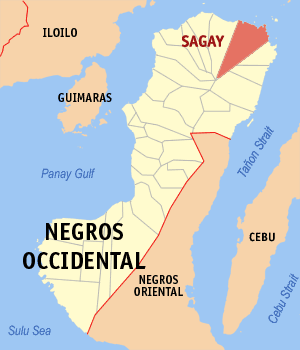
A 50-year old Badjao tribal leader based in Sagay City tested positive for coronavirus disease 2019 Wednesday, lawyer Ryan Bonghanoy, commander of the local Inter-Agency Task Force said.
Bonghanoy told Negros Now Daily that the local government unit, as part of its program to send back the Badjaos to their place of origin — either in Zamboanga or Iligan — conducted RT-PCR tests on 38 of them on Monday, Nov. 30.
When their swab tests results came Dec. 2, their leader, a frequent traveler to Bacolod City and Cadiz City where he sells jewelries, turned out positive, Bonghanoy said.
He was immediately taken to the isolation facility, he said, adding that his only close contacts were members of his family– his wife, daughter and son– who live in Barangay Taba-ao, Sagay City.
In a post on I Love Sagay Facebook account, the local IATF said that the Badjao leader was in Bacolod City Nov. 27-28 and returned to his barangay on Nov. 29.
On Nov. 30, a holiday, the LGU conducted swab tests for tribe members.
He then travelled to Cadiz City, along with his family, on Dec. 1 for his trade.
Bonghanoy said he was still in Cadiz when their results came out.
“He frequently travels to Bacolod and Cadiz. So, it might be possible that he was infected by COVID there,” the local IATF commander said.
Today, Dec. 3, Sagay City registered four new COVID cases and 2 recoveries. The LGU has remaining 75 active cases.
The city is also closely monitoring 384 PUMs, 104 of whom are in isolation in different quarantine facilities, while 269 others are under strict home quarantine, he added.
Bonghanoy renewed his appeal to Sagaynons to refrain from travelling to high risk areas and to, as much as possible, buy their supplies in Sagay City.
Also, don’t spread fake news. Let us not be complacent because COVID is still very much around. Strictly follow border control protocols until Dec. 15, he said.
He disclosed that the LGU continues with its mass testing campaign at the barangay level because it wants to have a more realistic grasp on the extent of transmission so that the problem is addressed based on empirical data.
Without mass testing, the local government would not know the real picture at ground level, he added. –ETL




